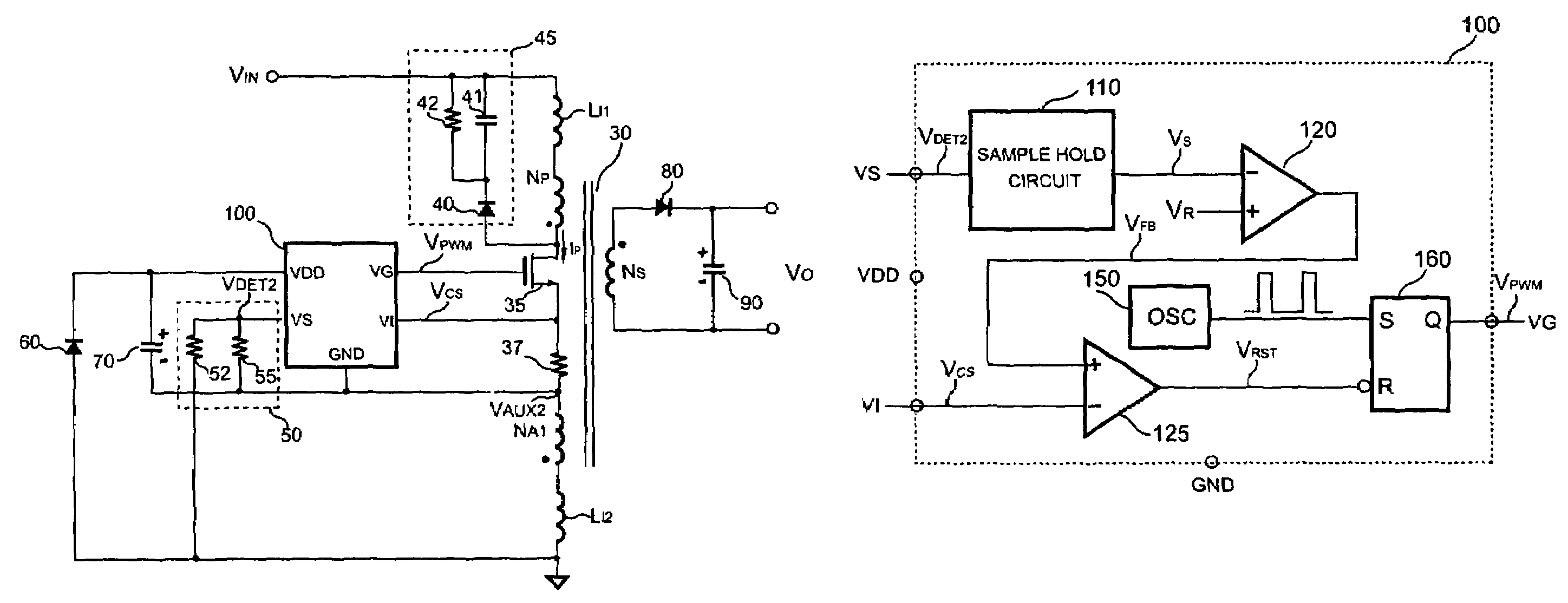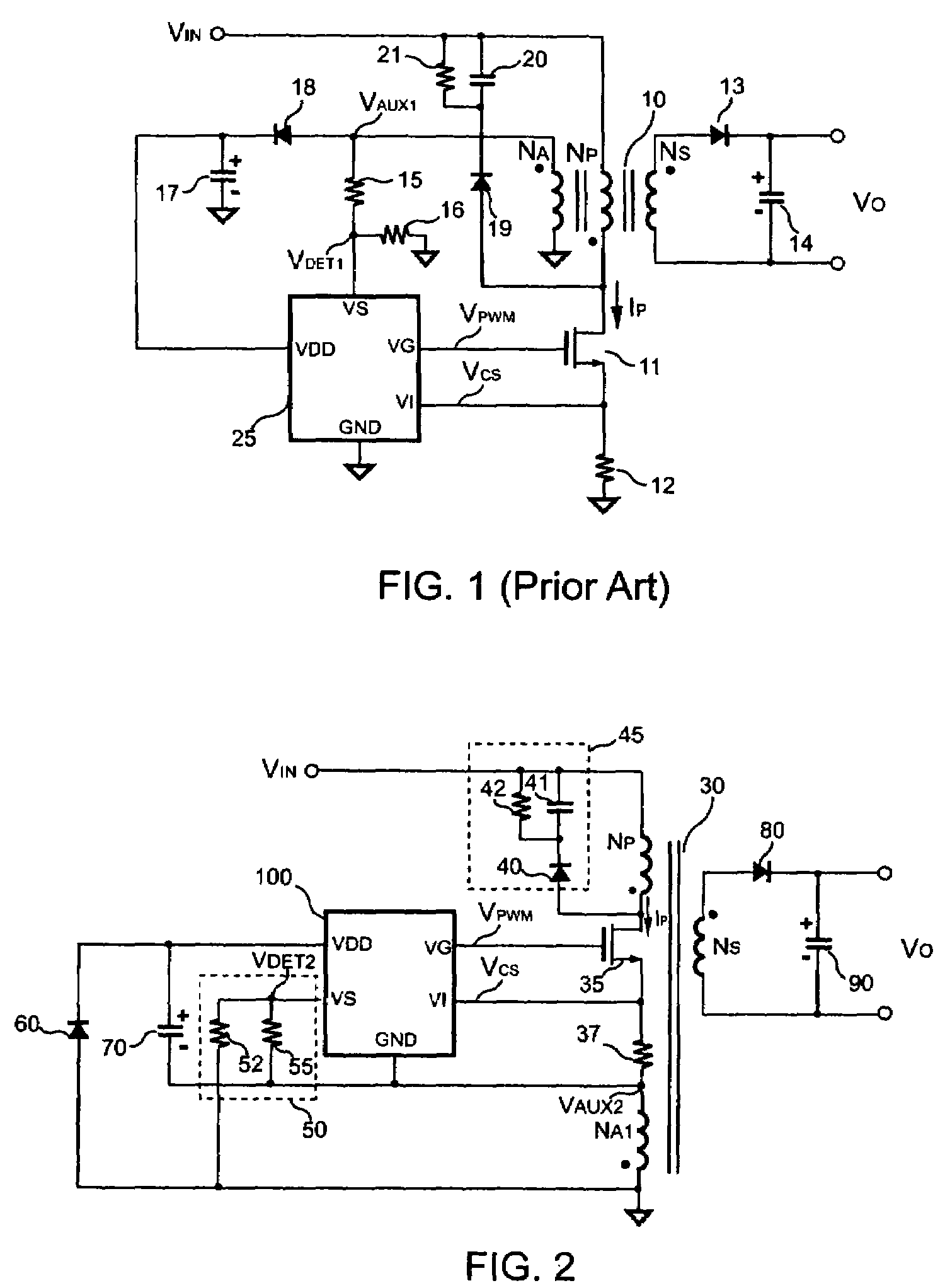Primary side controlled switching regulator
a switching regulator and side control technology, applied in the field of switching regulators, can solve the problems of poor load regulation at light load and no load, high power consumption caused, leakage inductor, etc., and achieve the effect of improving efficiency and reducing emi
- Summary
- Abstract
- Description
- Claims
- Application Information
AI Technical Summary
Benefits of technology
Problems solved by technology
Method used
Image
Examples
Embodiment Construction
[0022]FIG. 2 shows a circuit diagram of a primary-side controlled switching regulator in accordance with the present invention. The switching regulator includes a transformer 30 for transferring a stored energy from a primary side of the transformer 30 to a secondary side of the transformer 30. The primary side of the transformer 30 has a primary winding NP and a first auxiliary winding NA1. The secondary side of the transformer 30 has a secondary winding NS. The primary winding NP and the first auxiliary winding NA1 are coupled to the supply rail of the transformer 30. The primary winding NP is coupled to a positive supply rail VIN of the supply rail of the transformer 30. The first auxiliary winding NA1 is coupled to a negative supply rail (ground) of the supply rail of the transformer 30. A switch 35 is connected in series with the primary winding NP and the first auxiliary winding NA1 for switching the transformer 30. The switch 35 can be a power transistor or a power MOSFET. Be...
PUM
 Login to View More
Login to View More Abstract
Description
Claims
Application Information
 Login to View More
Login to View More - R&D
- Intellectual Property
- Life Sciences
- Materials
- Tech Scout
- Unparalleled Data Quality
- Higher Quality Content
- 60% Fewer Hallucinations
Browse by: Latest US Patents, China's latest patents, Technical Efficacy Thesaurus, Application Domain, Technology Topic, Popular Technical Reports.
© 2025 PatSnap. All rights reserved.Legal|Privacy policy|Modern Slavery Act Transparency Statement|Sitemap|About US| Contact US: help@patsnap.com



